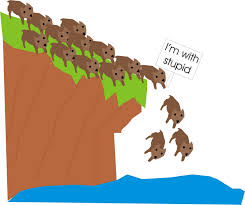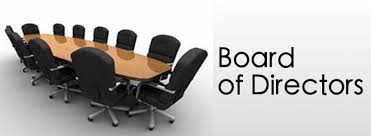Kool-Aid, Groupthink and Generative Governance
By Dani Robbins
Re-published with permission from nonprofit evolution blog
 There have been multiple things that have happened in the past week that have made me re-consider the phrase “Don’t drink the Kool-Aid.”
There have been multiple things that have happened in the past week that have made me re-consider the phrase “Don’t drink the Kool-Aid.”
The first was a Board that was exploring introducing a new funding model. The Board, who had been on the inside of a discussion of culture shift for the past year and were familiar with the materials and the arguments, briefly considered not building the organizational culture to introduce the considered change because they “didn’t think it was a big deal.” And it wasn’t a big deal to them because they’d already changed the culture among their group. They’d been thinking about it and reading about it and interviewing other groups that had already implemented the change and there was consensus among the group that it was the right direction for their organization.
Yet… even when there is agreement on the board, there is still the need to create buy-in among others. Without buy-in the potential for failure is high unless all constituents understand the need for change and the foundation is created to implement that change.
The second thing is, in fact, an illustration of just that. The second thing was a local commission’s decision to put forth a levy in the midst of a scandal. They weren’t wrong. They had done their homework, and looked at the issues and put forth a solid plan to introduce change. It failed, primarily and among other things because even though they had a plan to introduce the change and the leaders of the city were behind them, they didn’t have the informal community leaders on board and those leaders didn’t sell it to their constituents.
My intent is not to criticize any of these leaders. Each was in a difficult position and after considering all the options, made the decision that they felt best served their organization, their community and their constituents. That is the very definition of good leadership. Another component of good leadership is to learn from our mistakes and missteps. To that point, we need to ask:
What could have helped? What might have made the difference?
I believe the answer is generative governance. Let’s review how some of the techniques offered in my favorite board book “Governance as Leadership” could have made the difference.
 “Silent Starts — Set aside 2 minutes for each trustee to anonymously write on an index card the most important question relevant to the issue at hand.”
“Silent Starts — Set aside 2 minutes for each trustee to anonymously write on an index card the most important question relevant to the issue at hand.”
What if a board or commission member had written: “How can we engage community and committee leaders as well as those in informal leadership positions who could, in turn, engage their constituents?”
“One Minute Memos — At the end of discussions give each member 2-3 minutes to write down any thoughts or questions that were not expressed.”
This could have been a great opportunity to consider the worst case scenarios and create a plan ensure against such eventualities.
“Counter Points — Randomly designate 2-3 trustees to make the powerful counter arguments to initial recommendations.”
This could have been used to dispel all the arguments against the change. From that discussion, marketing materials, talking points and an engagement plan could have been created.
“Role Play — Ask a subset of the Board to assume the perspective of different constituent groups likely to be affected by the decision at hand.”
A board member could have taken on the role of a member of the community who would be the most negatively impacted by the change and a plan could be created to embrace those constituents and mitigate their impact.
“Breakouts — Small groups counter group think and ask: Do we have the right questions? What values are at stake? How else might this issue be framed?”
This is my favorite of all the techniques offered. It is the best way I’ve seen to get out of your head, out of the room and really consider all the ramifications of the discussion on the table from all the possible perspectives.
Let me be clear. I wasn’t in the room for any of these discussions; these are my assessments from afar. My intent is not to be a Monday morning quarterback. My intent is always to see if there is a lesson to be learned and how a different outcome might have been achieved. Could generative conversations have made the difference?
When it comes to group think and drinking the Kool-Aid, I try to never forget a church sign I once drove past; it said “Don’t believe everything you think.”
What’s your experience with group think and drinking the Kool-Aid? Do you agree that generative governance could be the answer? How have you mitigated the effects? As always, I welcome your insight, feedback and experience. Please share your ideas or suggestions for blog topics and consider hitting the follow button to enter your email.
A rising tide raises all boats.


 The two questions I get asked on a regular basis are “What is the right number of board members?” and “How often should our board meet?” The answer to both is the same: whatever it takes. You should have the number of board members you need who meet as often as necessary to get the job done.
The two questions I get asked on a regular basis are “What is the right number of board members?” and “How often should our board meet?” The answer to both is the same: whatever it takes. You should have the number of board members you need who meet as often as necessary to get the job done. There has been some movement in recent years toward boards meeting less often with committee meetings in between. Some boards meet every other month. Some boards (mine obviously) meet monthly and their committees do as well. Some boards meet quarterly.
There has been some movement in recent years toward boards meeting less often with committee meetings in between. Some boards meet every other month. Some boards (mine obviously) meet monthly and their committees do as well. Some boards meet quarterly. Still, as I stated at the beginning, only you can decide what the best model is for your organization. I offer some questions for you as you consider the right number of meetings:
Still, as I stated at the beginning, only you can decide what the best model is for your organization. I offer some questions for you as you consider the right number of meetings: Again, only you can decide what the best model is for your organization. I offer some questions as you consider the right number of members:
Again, only you can decide what the best model is for your organization. I offer some questions as you consider the right number of members: My community had a paltry 10% of eligible voters turn out to vote on Election Day. My neighbor said that any vote that didn’t have at least 40% of the eligible voters voting should be thrown out. But, of course and for good reason, it doesn’t work like that. Elections – and most other things – are decided by those who show up.
My community had a paltry 10% of eligible voters turn out to vote on Election Day. My neighbor said that any vote that didn’t have at least 40% of the eligible voters voting should be thrown out. But, of course and for good reason, it doesn’t work like that. Elections – and most other things – are decided by those who show up. As I’m sure you aware by now, I like to reflect back on things that have occurred and create a plan to avoid their reoccurrence. As such, I’ve been thinking about things our field can do to be stronger.
As I’m sure you aware by now, I like to reflect back on things that have occurred and create a plan to avoid their reoccurrence. As such, I’ve been thinking about things our field can do to be stronger. Over the last few months, I’ve found myself doing a lot of boardroom trainings on the subject of “Board Roles & Responsibilities“. When facilitating this training, there are two different slides talking about the board’s collective responsibilities and the other illustrates individual board members’ responsibilities. Listed on both slides at the top of the list is the responsibility of “asking questions“.
Over the last few months, I’ve found myself doing a lot of boardroom trainings on the subject of “Board Roles & Responsibilities“. When facilitating this training, there are two different slides talking about the board’s collective responsibilities and the other illustrates individual board members’ responsibilities. Listed on both slides at the top of the list is the responsibility of “asking questions“. Of course, we aren’t talking about asking questions that lend themselves to micro-management of staff. Here are just a few important questions that good boards ask:
Of course, we aren’t talking about asking questions that lend themselves to micro-management of staff. Here are just a few important questions that good boards ask: I tried to picture what a non-profit board might look like if it didn’t ask questions, and these words all came to mind:
I tried to picture what a non-profit board might look like if it didn’t ask questions, and these words all came to mind: On Tuesday evening I found myself sitting in front of a group of board volunteers as well as prospects who were contemplating joining the board. What started off as a routine training about basic board roles and responsibilities morphed into a discussion about what makes an exceptional board.
On Tuesday evening I found myself sitting in front of a group of board volunteers as well as prospects who were contemplating joining the board. What started off as a routine training about basic board roles and responsibilities morphed into a discussion about what makes an exceptional board. Working with organizations in New Mexico and West Texas means lots of windshield time, and last week I found myself contemplating the question: “What is the biggest cardinal sin a non-profit executive director can commit?” In the final analysis, my conclusion surprised me, which means it was destined to end up here on the DonorDreams blog for you to chew on and contemplate.
Working with organizations in New Mexico and West Texas means lots of windshield time, and last week I found myself contemplating the question: “What is the biggest cardinal sin a non-profit executive director can commit?” In the final analysis, my conclusion surprised me, which means it was destined to end up here on the DonorDreams blog for you to chew on and contemplate. It happened again yesterday. A non-profit friend of mine called and we talked for an hour about their revenue model and fundraising issues. Questions included:
It happened again yesterday. A non-profit friend of mine called and we talked for an hour about their revenue model and fundraising issues. Questions included: Last week I was out to lunch with two male non-profit friends in downtown Chicago when the topic of women board volunteers came up. This happens from time-to-time, and when it does I always bite my tongue because I tend to have strong opinions on this subject. So, I took a deep breath and prepared for what I assumed was going to be one of those “difficult and uncomfortable conversations“. Boy oh boy . . .was I wrong (and pleasantly surprised).
Last week I was out to lunch with two male non-profit friends in downtown Chicago when the topic of women board volunteers came up. This happens from time-to-time, and when it does I always bite my tongue because I tend to have strong opinions on this subject. So, I took a deep breath and prepared for what I assumed was going to be one of those “difficult and uncomfortable conversations“. Boy oh boy . . .was I wrong (and pleasantly surprised). Sometimes I hear something that hits me just right, and it takes days to get it out of my head. This happened on Tuesday during the Fox West Philanthropic Network’s
Sometimes I hear something that hits me just right, and it takes days to get it out of my head. This happened on Tuesday during the Fox West Philanthropic Network’s  Dani suggested that board volunteers who are “strategic thinkers” will have an easier time making the transition from traditional fiduciary modes of governance to more strategic and generative modes.
Dani suggested that board volunteers who are “strategic thinkers” will have an easier time making the transition from traditional fiduciary modes of governance to more strategic and generative modes. If you’re scratching your head while reading this list and asking “what does THAT mean,” then click the link and read the CEB Blog post. It really is quite good. If you want to learn more, then I suggest you start Googling around. 😉 You also might want to
If you’re scratching your head while reading this list and asking “what does THAT mean,” then click the link and read the CEB Blog post. It really is quite good. If you want to learn more, then I suggest you start Googling around. 😉 You also might want to